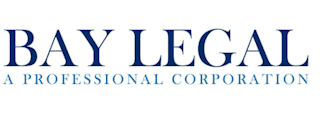A Closer Look at Regulation D and Regulation S
Unraveling the Intricacies of Securities Offerings: A Closer Look at Regulation D and Regulation S
Securities offerings represent a critical mechanism for companies, particularly startups, to raise essential capital. For those based in the U.S or conducting offerings internationally, a thorough understanding of the regulatory framework instituted by the U.S. Securities and Exchange Commission (SEC) is indispensable.
Central to this are two key regulations: Regulation D (Reg D) and Regulation S (Reg S). Here, we delve into the primary differences between these two crucial regulations, and how, when appropriately combined, they can provide a compelling strategy to accommodate both U.S. and international investors in your offerings.
A Primer on Regulation D
Regulation D offers companies a blueprint for raising capital through private placements without having to navigate the exhaustive registration process with the SEC. For smaller enterprises and startups keen on fundraising, this exemption has proven to be immensely advantageous.
Reg D encompasses several distinct rules, including Rules 504, 506(b), and 506(c), each furnished with its unique set of conditions and limitations. A nuanced understanding of these rules can streamline your capital-raising process and safeguard your enterprise against potential regulatory hiccups.
Decoding Regulation S
In contrast, Regulation S provides a regulatory compliance framework for entities or individuals aspiring to conduct securities offerings beyond U.S. borders. Specifically, Reg S offers an exemption from the registration requirements stipulated under Section 5 of the 1933 Securities Act for offerings made entirely outside the U.S.
Regulation D vs. Regulation S: A Comparative Analysis
While both Reg D and Reg S carve out pathways for companies to raise capital compliantly, they are marked by significant differences:
- Jurisdiction: The jurisdiction of the offerings represents the most prominent distinction. Reg D governs offerings within the U.S., whereas Reg S caters to those conducted outside the U.S.
- Investor Requirements: Reg D imposes certain investor requirements. For example, under Rules 506(b) and 506(c), securities may be sold to accredited investors, and Rule 506(c) permits general solicitation, provided all purchasers are accredited investors. Conversely, Reg S does not lay out specific investor accreditation requirements.
- Resale Restrictions: Securities offered under Reg D are “restricted”, implying that they cannot be resold for a designated period without registration or an exemption. In contrast, Reg S imposes a “distribution compliance period” during which securities may not be sold to U.S. persons or for their account or benefit.
Harmonizing Regulation D and Regulation S
Companies aiming to broaden their investor base by attracting both U.S. and international investors can strategically harmonize Reg D and Reg S. This involves structuring a combined offering such that the U.S. offering is executed under Reg D and the international offering under Reg S.
The SEC has explicitly stated that an offering complying with Reg D will not be integrated with an offering complying with Reg S. This assures that simultaneous offerings to U.S. and non-U.S. investors can transpire without affecting the exempt status of each other.
However, it is critical to ensure that each offering independently satisfies the stipulations of its respective regulation. Since navigating this complex landscape can be challenging, issuers are encouraged to engage seasoned legal counsel to ensure regulatory compliance.
Regulation D in Practice: The Startup Scenario
Let’s consider a Silicon Valley startup as an example for the application of Reg D. This young tech company is looking to raise capital to support its product development and growth strategies. With a pool of potential investors primarily located within the U.S, Reg D becomes their go-to choice.
The startup chooses to conduct a private placement under Rule 506(b) of Reg D, allowing it to raise an unlimited amount of capital from both accredited and up to 35 non-accredited investors, albeit with no general solicitation or advertising permitted. This way, the startup can secure the funds they need while staying compliant with SEC rules.
Regulation S in Practice: The International Business Scenario
Now, let’s imagine a European-based software company seeking to expand its operations globally. It decides to raise capital from investors outside the United States, particularly targeting the Asian market. To ensure its securities offering remains compliant with U.S. securities law, the company opts for Regulation S.
By adhering to Reg S, the company can legally bypass the registration requirements of the 1933 Securities Act, provided that its securities offering occurs entirely outside of the U.S. This allows the company to focus on attracting foreign investors without worrying about violating U.S. securities laws.
Regulation D and Regulation S in Tandem: The Multinational Corporation Scenario
Finally, consider a multinational corporation (MNC) aiming to raise substantial capital for a major project. Given its global footprint, the MNC has a diverse array of potential investors both within and outside the U.S.
To attract this broad investor base, the MNC decides to conduct a combined offering under both Reg D and Reg S. For the U.S. offering, it chooses Rule 506(c) of Reg D, which allows general solicitation and advertising but requires that all purchasers are accredited investors. For the non-U.S. offering, it utilizes Reg S to sidestep U.S. registration requirements, provided the offering is conducted entirely outside the U.S.
In this way, the MNC can maximize its capital raising efforts, expanding its reach to a wide range of investors, while ensuring it remains fully compliant with U.S. securities laws.
However, the MNC must ensure that each offering independently satisfies the requirements of its respective regulation. This complexity underscores the importance of experienced legal counsel to navigate the intricacies of combined Reg D and Reg S offerings.
Conclusion: Leveraging the Power of Reg D and Reg S
While Reg D and Reg S serve divergent purposes, they can be ingeniously integrated to effectively raise capital from a diversified cohort of investors. Though navigating the complexities of these regulations may seem daunting, the potential benefits they offer, particularly to growing companies, make them potent instruments in the fundraising toolkit.
